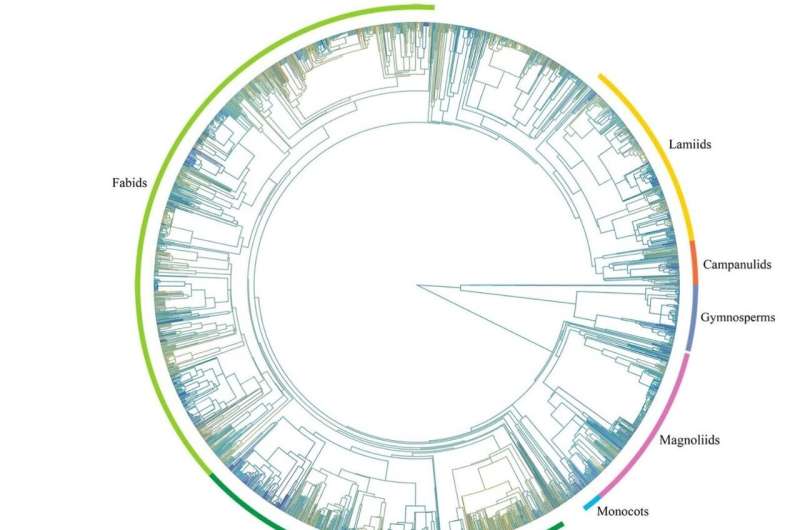This article has been reviewed according to Science X's editorial process and policies. Editors have highlighted the following attributes while ensuring the content's credibility:
fact-checked
proofread
Evolutionary history shapes variation of wood density: Study

Ecology and evolutionary biology suggest that closely related species are more likely to exhibit morphological and functional similarities compared to distantly related species. Each tree species represents a unique genetic reservoir and is a product of long-term evolutionary processes, with specific morphological structures and functional traits. However, previous studies have overlooked the relationship between the allometric biomass and wood density and phylogeny.
To that end, a new study has utilized a comprehensive global dataset to show that phylogeny plays a significant role in shaping wood density patterns. The researchers assessed phylogenetic signal in different taxonomic (e.g., angiosperms and gymnosperms) and ecological (e.g., tropical, temperate, and boreal) groups of tree species, explored the biogeographical and phylogenetic patterns of wood density, and quantified the relative importance of current environmental factors (e.g., climatic and soil variables) and evolutionary history (i.e., phylogenetic relatedness among species and lineages) in driving global wood density variation.
The work is published in the journal Plant Diversity.
The team found that wood density displayed a significant phylogenetic signal. Notably, wood density differed among different biomes and climatic zones, with higher mean values of wood density in relatively drier regions (highest in subtropical desert).
The study revealed that at a global scale, for angiosperms and gymnosperms combined, phylogeny and species (representing the variance explained by taxonomy and not direct explained by long-term evolution process) accounted for 84.3% and 7.7% of total wood density variation, respectively. In contrast, current environmental factors accounted for only 2.7% of total wood density variation.
When analyzing angiosperms and gymnosperms separately, the breakdown of explained variation differed: 84.2%, 7.5% and 6.7% for angiosperms, and 45.7%, 21.3% and 18.6% for gymnosperms.
More information: Fangbing Li et al, Evolutionary history shapes variation of wood density of tree species across the world, Plant Diversity (2024). DOI: 10.1016/j.pld.2024.04.002
Provided by KeAi Communications Co.





















